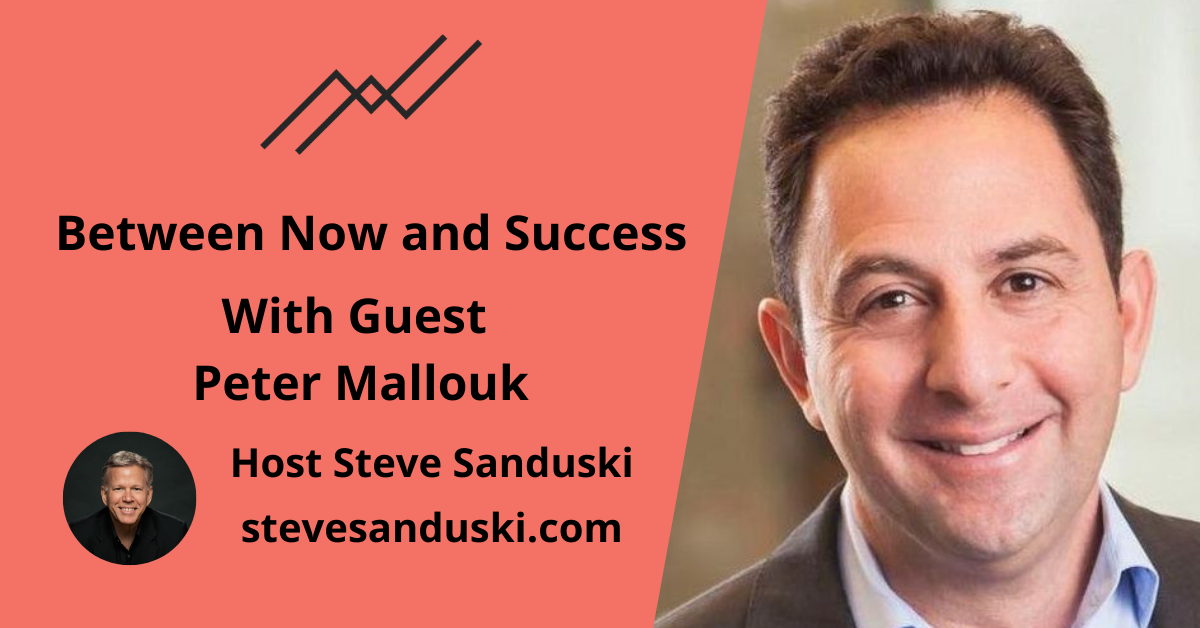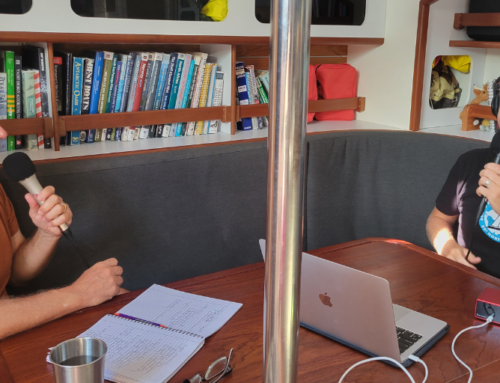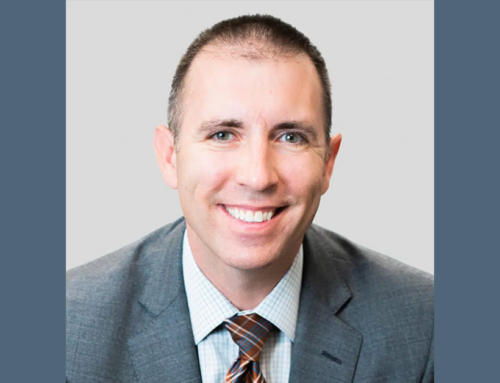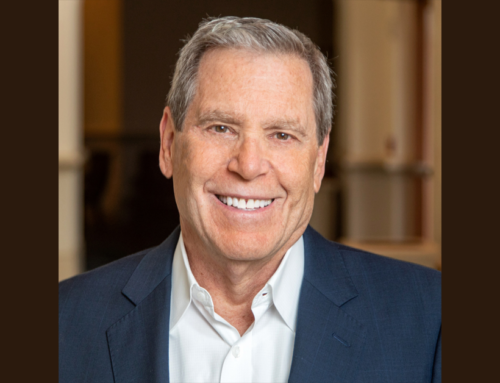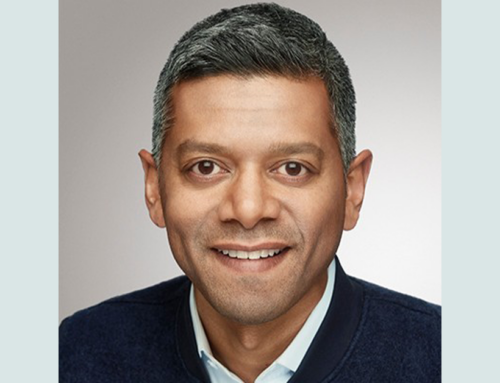In March 2020, Covid-19 lockdowns were starting, businesses were scrambling, and the markets were in a state of shock.
Despite all that, Creative Planning, Inc. had one of its best months ever.
According to President and CEO Peter Mallouk, his firm brought in $500 million in net new assets. Instead of panicking and trying to get their money out of the markets, Peter says many of his clients were giving him more money to manage – and sending more referrals as well.
The seeds that Peter’s firm planted many years ago led to his clients turning to the firm during a moment of unprecedented uncertainty. While great marketing will get you noticed, it’s the total client experience package that will get and keep clients as Peter’s firm has amply demonstrated.
Some advisors lament the chaos caused by Covid-19, but others realize there’s a tremendous opportunity to go on offense and see this as a time to reach out to people who need you now more than ever.
Covid-19 is teaching investors that there’s a big difference between auto depositing into a robo account and working with a professional who is sensitive to your unique life needs.
And, increasingly, people are willing to pay for that difference, if you can deliver it.
On a recent virtual event, Peter Mallouk and I talked about how advisors at any level can develop the kind of five-star experience that underscores your value to existing clients, drives referrals, and protects your business from fee compression.
3 Insights and 1 Warning
Here are 3 insights from Peter Mallouk on how he grew his firm to nearly 100,000 client accounts and 1 big warning about the future that you should start preparing for.
1. Deliver a product or service that is better than 90% of all other advisors.
It took Peter Mallouk less than 20 years to grow Creative Planning from $50 million to $50 billion in AUM. He credits that growth to differentiating the firm and its services from the rest of the pack.
“The success story of Creative Planning is we actually give clients something that’s very good, that they feel is better than what they got at other places,” Peter says. “The people are better. The offering is better. The advice is better. ‘I’m going to call Creative Planning when I have a question. I’m going to be confident to refer to them.’ That’s the real value. That’s the real service.”
Yet, even within the firm, there is a significant variance of growth results among advisors. Peter Mallouk said:
“We have hundreds of wealth managers and even when you stabilize for book size, there is very, very wide discrepancy on the growth of practices and where the referrals come from clients, which tells me, part of it is investments, part of it is the brand, and part of it is the planning but a big, big, big part of it is the advisor.”
He gave an example and said assume a potential new client was going to interview 10 advisors.
“Are you better than the other nine people they’re going to go sit down with? If not, why not? Is someone more credential than you, more educated than you? Are they more specialized in certain areas that are important in your community like if you’re in Atlanta at Coca-Cola, for example? What is it and solve those problems. That gets you in a competitive spot with individual clients and that’s what opens the doors to the next steps. There’s no shortcut around the fact that you ultimately have to be personally compelling to prospective clients.”
Another top advisor, Rebecca Rothstein, told me that she doesn’t just want clients to feel like they can call her when they need advice – she wants to be so integrated into their life planning that she’s the first call. And she’s not just in the top 10%. She’s in the top 0.1%. She told me:
“This is an evolving relationship. Any really good advisor knows to listen to what their clients have to say, but they also know to ask their client what’s going on with them. Check in. ‘What’s happening? How’s your business? How are your children doing?’ It’s not just about whether or not you’re making them money, it’s about the global relationship they have to their money and how it allows them to live a life they want to live.”
The client experience at large firms like Peter’s and Rebecca’s now includes things like building legal structures, tax planning, and comprehensive estate planning. If you don’t have the scale yet to, say, employ a CPA (let alone 13, like Michael Chasnoff’s firm does), you can still stay on your client’s speed dial if you demonstrate your ability to “quarterback” major financial decisions. That starts with talking to clients about the life transitions they’re anticipating and effectively dealing with the ones that come up unexpectedly.
It goes way beyond just managing money. Sure, there are some clever things you can do on the investment side and add real value there. But ultimately, money is just a tool. Ten years from now, clients won’t remember if you got an extra 50 bps of return, but they will remember if you were there to help them bail out their 23-year old son who got busted for DUI, or how you successfully facilitated the completion of a tricky succession plan in a family business.
When I asked him what financial planning means to him, Peter Mallouk said:
“To me, it’s not just a retirement projection. It’s what should your legal structure be? What should the tax plan be? What’s going on with the kid’s school? What happens if you’re disabled or have a long-term care need? What happens if you die? What happens if your home burns down or you’re in a car accident? Are you in a situation where you need asset protection? What are we doing to protect those assets? It has to be more than a retirement projection.”
2. Specialize.
Another key to Creative Planning’s success is that they have built their service around clients to whom they can deliver the most value. At Creative Planning’s level, asset size becomes an important part of that equation. But Peter Mallouk thinks that growing firms should focus less on investible assets and more on mastering the needs of a specific niche.
“I would advise specialization. I wouldn’t even focus on the size of the client. I’d focus on a very, very small segment of the market, like people that own horses, people that are dentists. Something like that where you can really create value.”
On another virtual event that I moderated, Charles Schwab’s Lisa Salvi told me that she coaches advisors to create a client persona and form a really clear picture of who their ideal clients are. Name them, identify what they do for a living, what their personal and professional challenges are. Once you can really see that person, you can figure out what services to offer them and the best way to reach them in language they’ll respond to.
Some advisors worry that if they get too specific, they risk limiting their growth opportunities. But when I talk to the absolute best of the best, the opposite is always true. Top firms are often laser-focused on that ideal client. And, interestingly, that narrow focus often leads to a valuable broadening of service.
Steve Wershing, President of the Client Driven Practice, told me that a few years ago he was advising a firm that specialized in doctors. They asked a group of doctors about their most pressing financial issues. Their answer was navigating potential sales of their practices to larger hospital systems. Steve said:
“That wasn’t even on our radar. So it led that firm to research a whole bunch of things so they could be valuable to those doctors. Another example would be: obstetricians are the most litigated-against medical specialty. So, one of the things you might deliver in your unique niche experience is medical malpractice insurance. Or you might have a specialty in asset protection strategy, so when they do get sued, what you’ve been able to work so hard for is protected.”
Get really focused on who your ideal client is and become everything for that client. Over time, as you get bigger you can expand the types of clients that you work with as you have additional resources. That very strategy helped Peter grow Creative Planning’s client base in a major way. Peter said:
“When we started working with Tony Robbins, we had thousands of people that were reaching out to us because we had a book that a ton of people bought,” Peter says. “So, we added an emerging wealth group. We weren’t seeing anybody at that account size before and now that group has probably 1,500 clients or so, manages over a billion in assets, has about 20 advisors. We help that group grow and become clients in the private client group.”
3. Hire the right people and avoid the wrong people.
As the client experience becomes a more and more important differentiator, the ability of your team to deliver service beyond money management is more important too. From the second they walk in your front door (or video screen) until they shake your hand (or acknowledge while social distancing) at the end of the meeting, clients and prospects should feel welcome, important, and cared for. Peter Mallouk said:
“I think there’s two components to this. One is getting the right people and the other is avoiding the wrong people. I always used to have in my mind, just hire the right people. It took me until three or four years ago to really nail down, this is the type of person I want to hire. I think a big key of our success has been getting really exceptionally talented people. Our model is extremely consultative, very high touch, very proactive. We need conscientious people. We need caring people. We need very sharp people, very energetic people. I’m really trying to find that top 10%.”
If, like Peter, your business model is becoming more high touch and proactive, you might find that the absolute best people for your team aren’t necessarily traditional financial pros. Money management and office administration can be learned. Top-notch people skills often can’t be. And if someone has exemplified inquisitiveness and compassion in another field, they might be able to add real value to your client experience.
Peter’s Warning for Advisors
Robo advisors were the first shot, but they came from outside the industry. The next move lower will come from inside the industry—and it just might come from Peter’s firm. Get ready!
1. Be prepared for AUM fees to drop 25 – 35%.
At the end of our conversation, I asked Peter Mallouk what he sees on the horizon. He mentioned a topic that’s been on all of our minds since we first heard the phrase “robo advisor.”
“I think what’s coming, and it’s just going to hit everybody in the face, is fee compression. And I think it’s coming sooner than people think. I don’t know if it’s going to be 3 years from now or 8 years from now, but it’s not 10 years from now. I think it’s going to be swift. I think it’s going to be severe. I think it’s going to devastate a lot of folks in this space. I think everyone that says that’s not happening is in total and complete denial. Somebody, I hope it’s Creative Planning, is going to be the first to lower fees substantively. I am very aggressively trying to get to the scale where we can be on the delivering end of that rather than the receiving end.”
Covid-19 has accelerated so many different trends in our business, from Life-Centered Planning to digital marketing to serving clients via virtual meetings. Could the pandemic also bring about this long-predicted drop in fees?
I think it’s very possible. But I also think the “when” part of the question isn’t all that important. We all know fee compression is coming, just as surely as your client knows retirement or the end of their career phase is coming. In both cases the relevant question is, “How are you planning for that transition?”
For most advisors, the answer will (or should) be to 1) keep striving toward being a top 10% advisor (or top 1%) in terms of the totality of what you deliver, 2) grow and mine a specialized niche, and 3) hire, nurture, and retain the very best people (and avoid the wrong people).
And that’s why you can’t let Covid-19 lock you in amber for the rest of the year. The folks who need you the most right now need more than just competent money management. That’s table stakes. What they really need is someone on their side, someone who is “the first call” and can help them make decisions so they can thrive through this crisis moment and every other crisis and major life transition that will follow.

